Last updated on
Discover the foolproof steps to efficiently maneuver a couch into your apartment, making the process seamless and stress-free.
Moving into a new apartment can be an exciting adventure, but it can also come with its fair share of challenges. One of the biggest hurdles many people face is getting their furniture through the door and into their new home.
This is especially true when it comes to getting a couch into an apartment. Whether you’re dealing with narrow hallways, tight corners, or small elevators, moving a couch can quickly turn into a frustrating experience if you’re not prepared.
But fear not! In this article, we’ll share some helpful tips and tricks for successfully getting your couch into your new apartment without any headaches (or backaches). So grab your measuring tape and let’s get started!
Key takeaways:
- Clear a path and communicate with delivery team
- Measure couch and all openings it needs to pass through
- Measure the height and width of the doorway
- Measure all other openings along the way
- Use proper lifting techniques and consider using moving equipment
Table of Contents
Preparing for Delivery
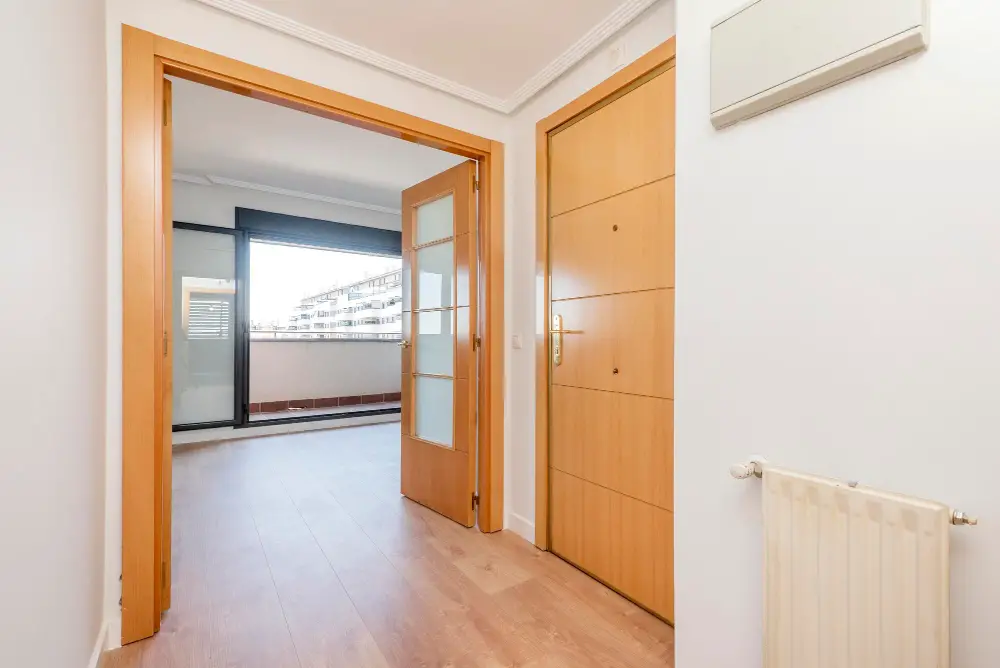
Before the delivery of your couch, it’s essential to prepare for its arrival. This means clearing a path from the entrance to your apartment and removing any obstacles that may hinder movement.
If you live in an apartment complex, make sure to reserve an elevator or loading dock ahead of time if necessary. It’s also important to communicate with the delivery team about any potential challenges they may face when moving your couch into your home.
Once you’ve cleared a path and communicated with the delivery team, take some time to measure both your couch and all openings through which it will need to pass. This includes doorways, hallways, stairwells or elevators – anything that could pose as an obstacle during move-in day.
Measuring the Couch’s Dimensions

This will help you determine if the couch can fit through the door and any other openings along the way. Start by measuring the height, width, and depth of your couch using a tape measure or ruler.
It’s important to note that some furniture stores may provide these measurements for you, so be sure to ask before making your purchase. Once you have these measurements on hand, compare them with those of all openings leading up to your apartment.
Measuring the Doorway

This step is crucial because it will determine whether or not your couch can fit through the door. Start by measuring the height and width of your doorway, including any molding or trim that may be present.
Be sure to take multiple measurements at different points along the frame as some doorways may have slight variations in size.
Next, compare these measurements with those of your couch. If you’re unsure about how to measure your couch properly, refer back to its original packaging or manufacturer’s instructions for guidance.
If there isn’t enough clearance between the doorway and sofa dimensions after taking into account all moldings/trimmings on both sides then disassembling might be necessary before moving forward with getting a new one inside.
Measure the Size of All Openings

This includes hallways, stairwells, elevators or any other tight spaces that may pose a challenge during the move. It is important to take accurate measurements of these areas as well so you can determine if there are any potential obstacles in your path.
To do this effectively, use a measuring tape and measure both height and width of each opening along with its diagonal measurement from corner-to-corner. Keep in mind that even small differences between measurements can make a big difference when trying to maneuver furniture through tight spaces.
By taking precise measurements beforehand, you’ll be able to identify potential problem areas before moving day arrives.
Correlate Couch and Opening Sizes
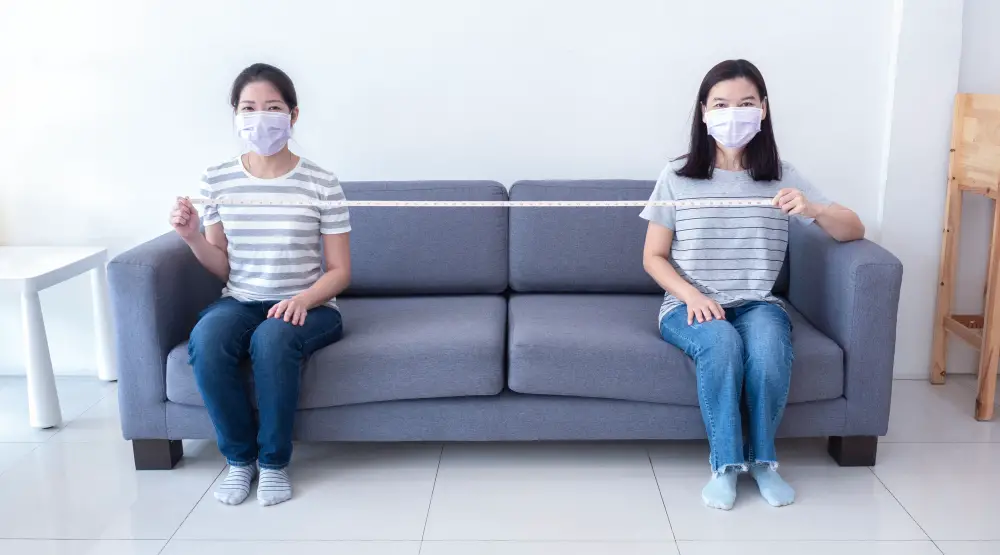
This step is crucial in ensuring that your couch can fit through all openings without any damage. If the measurements don’t match up, then you may need to consider disassembling the couch or finding an alternative route.
To correlate these sizes accurately, measure both the height and width of each opening along with your furniture piece. Then compare them side by side to determine if there are any discrepancies between them.
If there is a difference in size between your furniture piece and doorway or hallway opening, it’s essential not to force anything through as this could cause damage both inside and outside of your apartment building. Instead, consider disassembling parts of the sofa such as removing cushions or legs before attempting again.
Removing Obstacles
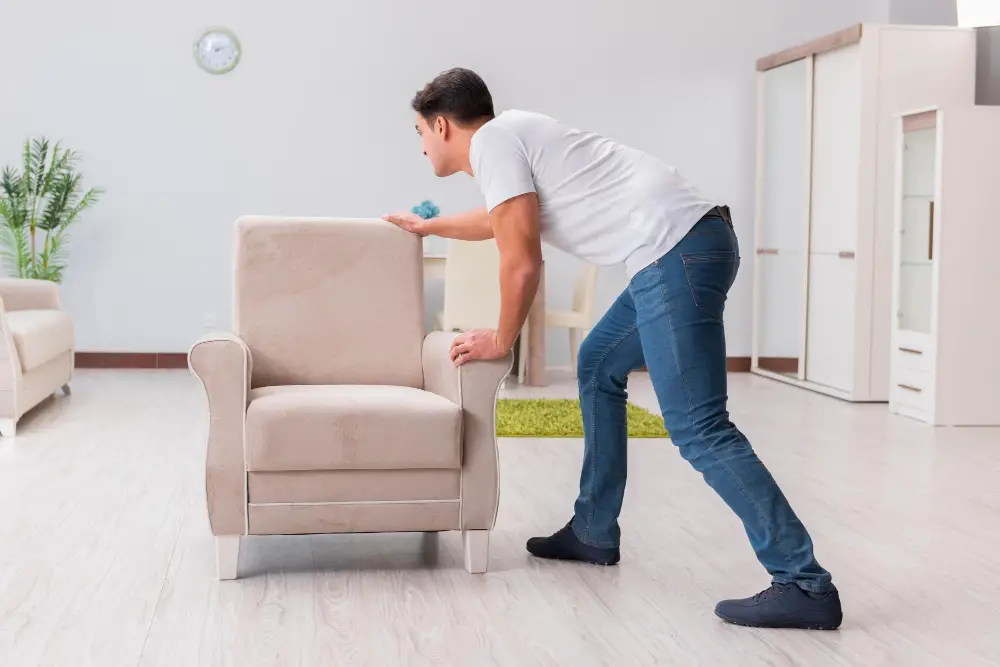
This includes small furniture items, rugs, and other decorative pieces that could make navigating through tight spaces even more challenging. If there are any fragile or valuable items nearby, move them out of harm’s way before proceeding.
If you’re dealing with a particularly narrow hallway or doorway, consider removing doors and door stops to create more space for maneuvering your couch. You can also try using furniture sliders or blankets to protect both the floor and your couch while moving it around corners.
By taking these steps beforehand, you’ll minimize the risk of damaging either your belongings or apartment walls during the move.
Remove Doors and Door Stops (Optional)
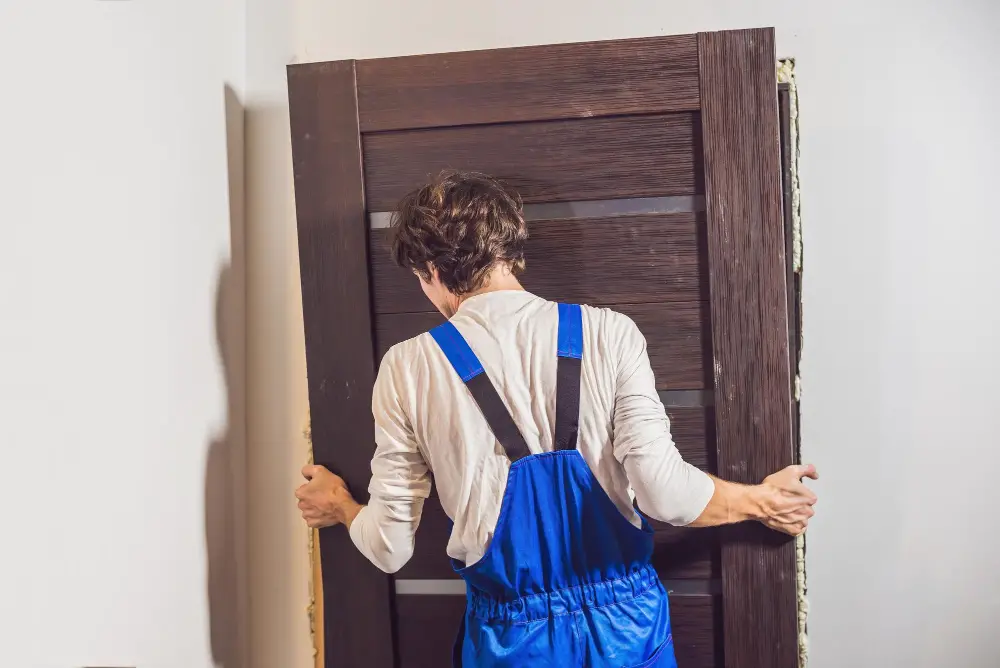
This step is optional but can make a significant difference in getting your couch through the opening. Before removing any doors or stops, be sure to check with your landlord or building management to ensure it’s allowed.
Once you have permission, remove the hinge pins from each of the hinges using a hammer and screwdriver. Be sure to have someone hold onto the door as you remove each pin so that it doesn’t fall off its hinges unexpectedly.
Next, use pliers or a pry bar to gently remove any door stops around the frame of your doorway. These small pieces of wood are designed to keep doors from swinging too far open and can often get in the way when trying to move large items like furniture.
Disassembling the Couch
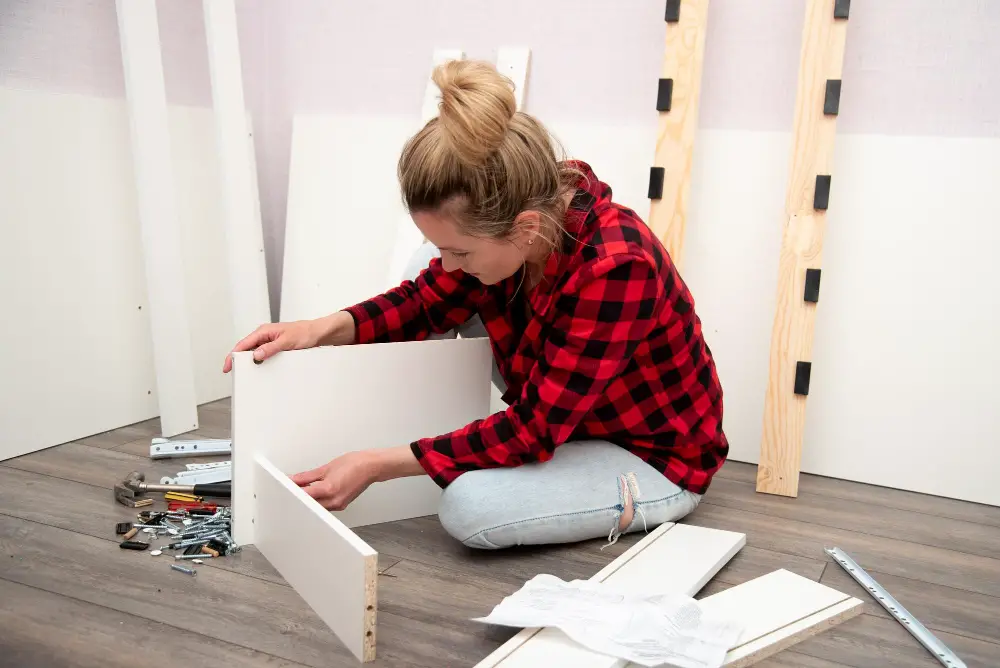
This is especially true if you have a sectional or a large sofa with detachable parts. Before taking apart your furniture, make sure to take pictures of how it’s assembled so that you can easily put it back together later.
Start by removing any cushions or pillows from the couch. Then look for screws or bolts that hold different sections of the frame together and use an appropriate tool like a screwdriver to remove them carefully.
Be sure not to force anything as this could damage both your furniture and yourself in case something snaps unexpectedly. Once all parts are detached, wrap them securely in blankets before moving them out of your apartment.
Remove Cushions and Other Parts
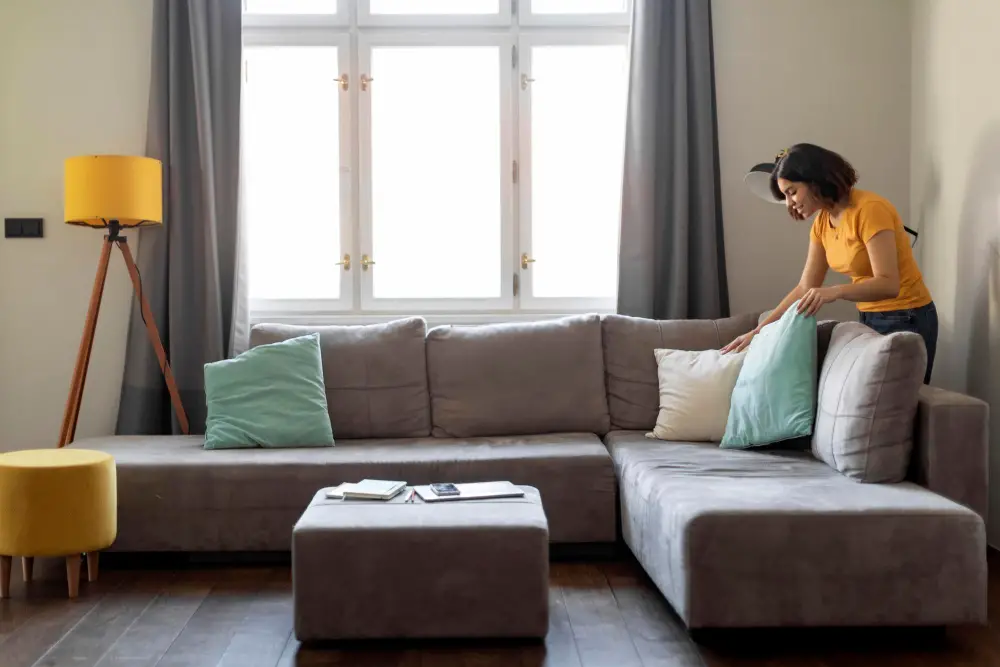
The first step is to remove any cushions or pillows that are attached to the couch. This will make it easier for you and your helpers to lift and maneuver the frame of the couch without worrying about damaging any delicate fabrics or materials.
Once all of the cushions have been removed, take a look at other removable parts such as legs, armrests, and backrests. If these can be easily detached from your sofa with a screwdriver or wrench then go ahead and do so before attempting another move.
Choosing the Right Path

This is where creativity comes in handy! You may need to think outside of the box and consider alternative routes that you wouldn’t have thought of before. For example, if there’s a balcony or window nearby, you could try hoisting the couch up from outside with ropes or pulleys (but be sure to take all necessary safety precautions!).
Alternatively, if there are any large windows that can be removed temporarily without causing damage, this could provide an easier route for getting your furniture inside.
Another important factor when choosing a path is considering any obstacles along the way. Take note of things like light fixtures hanging low from ceilings or narrow hallways with sharp turns – these will require extra care when maneuvering around them.
Ultimately, choosing the right path will depend on several factors unique to each situation.
Lifting Techniques
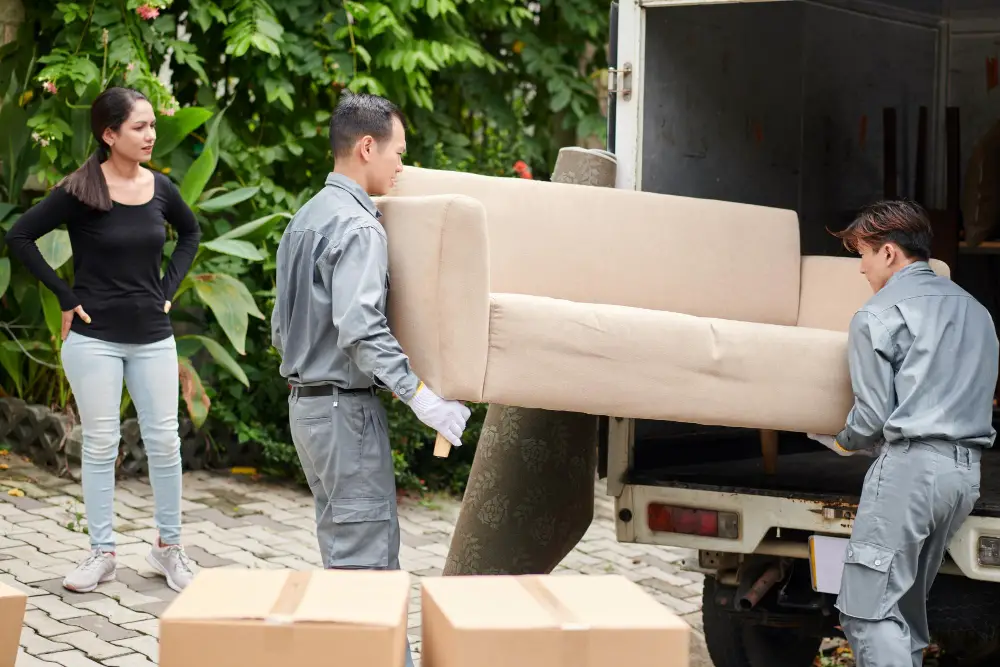
Not only can lifting incorrectly lead to injury, but it can also damage your furniture or walls. To avoid any mishaps, follow these tips:
1. Lift with your legs: Bend at the knees and use the strength in your legs to lift the couch.
2. Keep a straight back: Avoid hunching over or twisting while you lift.
3. Use teamwork: Enlist friends or family members to help distribute weight evenly and make sure everyone is on the same page about where they’re going and how they’ll get there.
4. Take breaks when needed: Moving heavy furniture can be exhausting work – don’t hesitate to take breaks as needed so that you don’t become fatigued halfway through moving day!
Moving Through Narrow Spaces
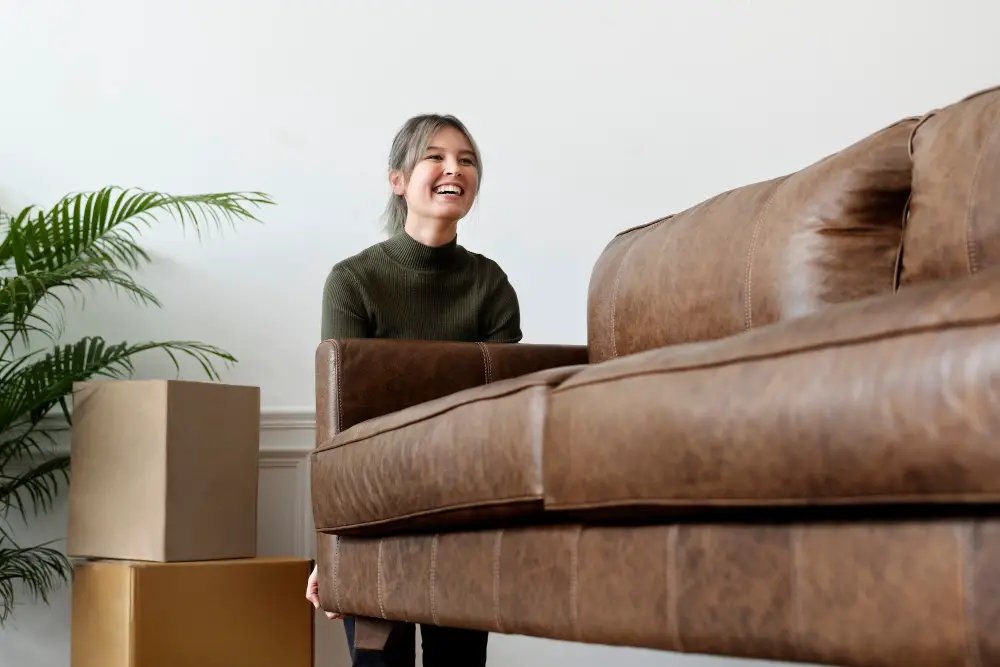
If you’re dealing with narrow spaces, such as hallways or stairwells, there are a few things to keep in mind. First of all, make sure that everyone involved in the move is aware of any tight spots ahead of time so they can be prepared.
When navigating through narrow spaces with a couch, it’s important to take your time and move slowly. Rushing can lead to accidents or damage to both the furniture and walls/doors/floors.
If possible try tilting the sofa at an angle while moving through tight corners; this will help reduce its width temporarily making it easier for passage. Additionally using sliders under each leg could also help glide over carpeted areas without causing friction which makes movement difficult.
Using Moving Equipment

If you’re dealing with tight spaces or awkward angles, using specialized moving equipment can help you get your couch through those tricky spots without damaging your furniture or walls.
One of the most useful pieces of equipment for moving a couch is a dolly. A dolly is essentially a platform on wheels that allows you to easily transport heavy items like furniture from one place to another.
When using a dolly, be sure to secure your couch tightly and use caution when navigating corners and other obstacles.
Another helpful piece of equipment is straps or ropes. These can be used in conjunction with the dolly or by themselves if you need to lift and carry your couch up stairs or over uneven terrain.
Be sure to use proper lifting techniques when using straps so as not injure yourself.
Elevator Restrictions

Some buildings may require that you reserve a specific time slot or use a designated service elevator to move large items like couches. Some elevators may have weight limits that could prevent you from transporting your couch in one trip.
To avoid any surprises on moving day, be sure to contact your building management ahead of time and ask about their policies regarding furniture moves. If there are restrictions in place, make sure to schedule accordingly and plan for extra time as needed.
Maneuvering Stairwells

If you’re dealing with a multi-story building, you’ll need to carefully navigate each step without damaging your furniture or injuring yourself. Here are some tips for maneuvering stairwells safely and efficiently:
– Use proper lifting techniques: When carrying your couch up or down stairs, make sure to use proper lifting techniques. Bend at the knees and keep your back straight while holding onto the bottom of the couch.
– Take breaks if needed: Moving a heavy piece of furniture up several flights of stairs can be exhausting work. Don’t hesitate to take breaks as needed so that you don’t overexert yourself.
– Use straps or ropes: Consider using straps or ropes around the base of your couch for added stability while navigating staircases.
Navigating Corners
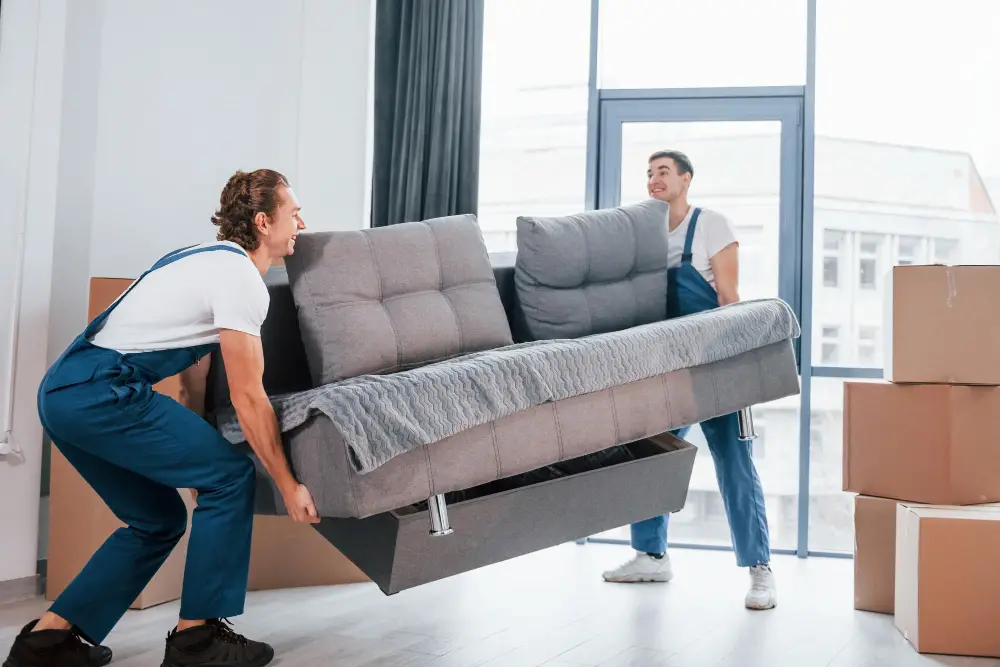
Whether you’re dealing with tight turns in hallways or sharp angles in stairwells, getting your couch around corners can be a real headache. But don’t worry – there are some tricks to make this process easier.
Firstly, it’s important to have enough people on hand to help move the couch around the corner safely and efficiently. You’ll need at least two people on either end of the sofa, and possibly more depending on its size.
Next, consider using furniture sliders or gliders under each leg of your sofa as they will reduce friction between your floor surface and furniture legs making it easy for you to slide them through narrow spaces without damaging anything.
Another trick is tilting one end up while keeping another down so that only two legs touch the ground; this way allows for better maneuverability when turning corners since there will be less weight pushing against walls or door frames which could cause damage if not handled correctly.
Balancing On Balconies

If your balcony is large enough, you may be able to use it as a landing spot for your couch. However, this requires careful planning and execution.
Before attempting to balance the couch on the balcony, make sure that it’s safe and sturdy enough to support its weight. Check with your landlord or building management if you’re unsure about the weight limit of your balcony.
Once you’ve confirmed that it’s safe, measure the width of both the door frame and balcony entrance before attempting any maneuvers. This will help ensure that there is enough clearance space for both yourself and anyone helping move in.
When lifting up onto a narrow or small area like a balcony ledge, take extra care not only with balancing but also keeping fingers out from under heavy objects while maneuvering them through tight spaces.
Working With Windows

This can be a tricky process and requires extra caution to ensure safety. Before attempting this method, make sure that the window is large enough for the couch to fit through and that it opens wide enough for easy access.
To begin, remove any screens or security bars from the window. Next, secure ropes or straps around the couch and attach them securely to an anchor point inside of your apartment.
With someone holding onto these ropes from inside of your home while another person guides it outside through the open window.
It’s important not only to have strong anchors but also sturdy equipment such as pulleys or winches if necessary in order not only move safely but also avoid damaging either furniture pieces nor walls during transportation.
Reassembling the Couch
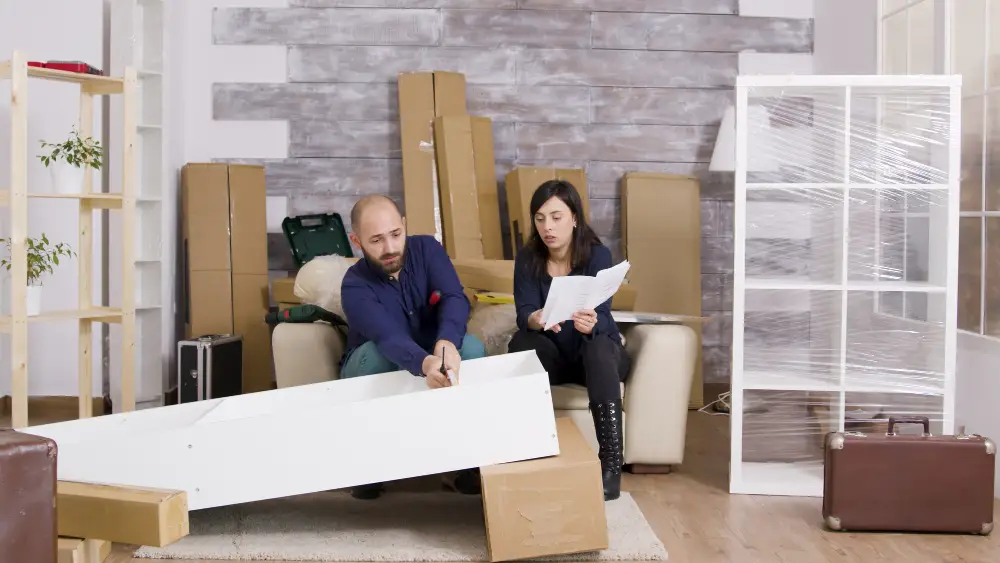
This step is crucial to ensure that your couch looks and functions as intended. Start by putting back any parts or cushions that were removed during disassembly.
Next, carefully align the different sections of the couch together. Make sure everything fits snugly into place before tightening any screws or bolts.
If you’re unsure about how to put everything back together, refer to the manufacturer’s instructions or seek help from a professional.
Give your newly assembled couch a thorough inspection for any damages incurred during transport. Check for scratches on wooden legs or tears in upholstery fabric – anything out of place should be addressed immediately.
Post-Move Inspection

This will help ensure that everything is in good condition and there are no damages or scratches on the walls, floors, or furniture. Take a moment to inspect the couch itself for any damage that may have occurred during the move.
If you notice any issues with your couch or other items after moving them into your apartment, be sure to document them immediately by taking photos and contacting either the delivery company (if applicable) or landlord/property manager as soon as possible.
By following these tips and tricks for getting a couch into an apartment, you can make this daunting task much easier on yourself. With some careful planning and preparation beforehand – including measuring all openings carefully – along with proper lifting techniques during transport- moving day should go smoothly!
FAQ
Will my couch fit into my apartment?
Your couch will fit into your apartment if the doorframe width is greater than the sofa height, allowing for wiggle room on either side.
How do people get furniture into their apartments?
People get furniture into their apartments by using a service or freight elevator, which is larger than an ordinary elevator and designed to accommodate large items like furniture pieces in high-rise buildings.
How do you fit a sofa through a door?
To fit a sofa through a door, remove the door by tapping out the hinge pins, shifting the door sideways to take it off the hinges, and removing the hinges if necessary to free up extra inches for the sofa to pass through.
How do you fit a couch through a narrow doorway?
To fit a couch through a narrow doorway, slide it towards the door and move it through either straight or in a hooking motion, entering with the back or seat first, or carry it horizontally if possible.
What are some techniques for maneuvering a couch around tight corners and stairs?
Some techniques for maneuvering a couch around tight corners and stairs include removing cushions, pivoting, lifting one end at a time, and using sliding pads or moving straps for smoother transport.
Are there specific types of couches designed for easier transportation into apartments?
Yes, modular couches are designed for easier transportation into apartments.
How can I disassemble and reassemble a couch for easier transportation and fitting?
To disassemble and reassemble a couch for easier transportation and fitting, carefully remove cushions, detach upholstery, unscrew legs, separate joining pieces, and then reverse the process for reassembly.
You may also like to read:



